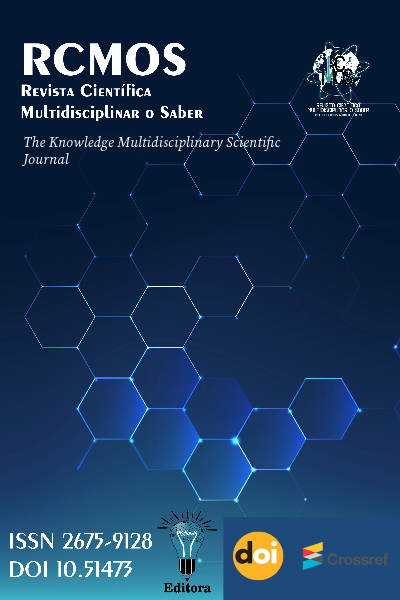THE APPLICATION OF IN SILICO TOOLS IN THE DEVELOPMENT OF CHEMOTHERAPEUTIC AGENTS
DOI:
https://doi.org/10.51473/rcmos.v1i2.2024.692Keywords:
Chemotherapeutics. In Silico Methods. Molecular Docking. Molecular Dynamics. QSAR.Abstract
This article explores the use of in silico tools in the development of chemotherapeutics, highlighting their ability to accelerate the discovery and optimization of new cancer treatments. Through techniques such as molecular docking, molecular dynamics, QSAR, and machine learning, researchers can simulate molecular interactions, enabling the identification and refinement of selective kinase inhibitors and other molecules with therapeutic potential. The studies cited demonstrate how these approaches contribute to more effective and personalized treatments, reducing both the costs and the time of drug development. Moreover, the integration of these techniques promises to revolutionize anticancer therapies, moving the field of oncology into an era of precision medicine.
Downloads
References
ALANAZI, A. S. et al. Design, synthesis, antitumor evaluation, and molecular docking of novel pyrrolo[2,3-d]pyrimidine as multi-kinase inhibitors. Journal of The Saudi Pharmaceutical Society, v. 31, n. 6, p. 989–997, 1 maio 2023.
ASAAD, F.; ZAKA, M.; DURDAGI, S. Development of Machine Learning-based QSAR Models for the Designing of Novel Anti-cancer Therapeutics Against Malignant Glioma. bioRxiv, 19 ago. 2024.
BALLESTA, A. et al. A multi‐scale systems pharmacology approach for personalizing irinotecan chronotherapy. The FASEB Journal, v. 30, n. S1, 1 abr. 2016.
BUKKURU, S. et al. Identifying Interstitials in MD Simulations — Max Space Clustering Method. v. 759, n. 1, p. 012092, 1 out. 2016.
EL FADILI, M. et al. In silico insights into the design of novel NR2B-selective NMDA receptor antagonists: QSAR modeling, ADME-toxicity predictions, molecular docking, and molecular dynamics investigations. BMC chemistry, v. 18, n. 1, 31 jul. 2024.
KARAMPURI, A.; PERUGU, S. A breast cancer-specific combinational QSAR model development using machine learning and deep learning approaches. Frontiers in bioinformatics, 15 jan. 2024.
KAUR, S. et al. Evaluation of 3, 3’-Disubstituted Oxindoles Derivatives as a Potential Anti- Cancer Tyrosine Kinase Inhibitors-Molecular Docking and ADME Studies. Current Indian science, v. 02, 3 jul. 2024.
MACHADO, P. Molecular Docking in the Study of Ligand-Protein Recognition: An Overview. Biomedical engineering, 25 jan. 2023.
MALLA, B. A. et al. Insights into molecular docking and dynamics to reveal therapeutic potential of natural compounds against P53 protein. Journal of Biomolecular Structure & Dynamics, p. 1–20, 25 out. 2022.
SHAIKH, N. K. et al. Comprehensive molecular docking and dynamic simulations for drug repurposing of clinical drugs against multiple cancer kinase targets. Journal of Biomolecular Structure & Dynamics, p. 1–9, 22 set. 2022.
SINGH, K.; BHUSHAN, B.; SINGH, B. Advances in Drug Discovery and Design Using Computer-Aided Molecular Modeling. Current Computer - Aided Drug Design, 14 set. 2023.
SPILL, F.; VERA-SIGÜENZA, E.; FALEIDE, J. I. Interplay of p53 and XIAP protein dynamics orchestrates cell fate in response to chemotherapy. Journal of Theoretical Biology, p. 111562, 1 jun. 2023.
UMAR, A. B. et al. Ligand-based drug design and molecular docking simulation studies of some novel anticancer compounds on MALME-3M melanoma cell line. Egyptian Journal of Medical Human Genetics, v. 22, n. 1, p. 1–15, 1 dez. 2021.
Downloads
Additional Files
Published
Issue
Section
License
Copyright (c) 2024 Marcia Helena Rodrigues Velloso (Autor/in)

This work is licensed under a Creative Commons Attribution 4.0 International License.










